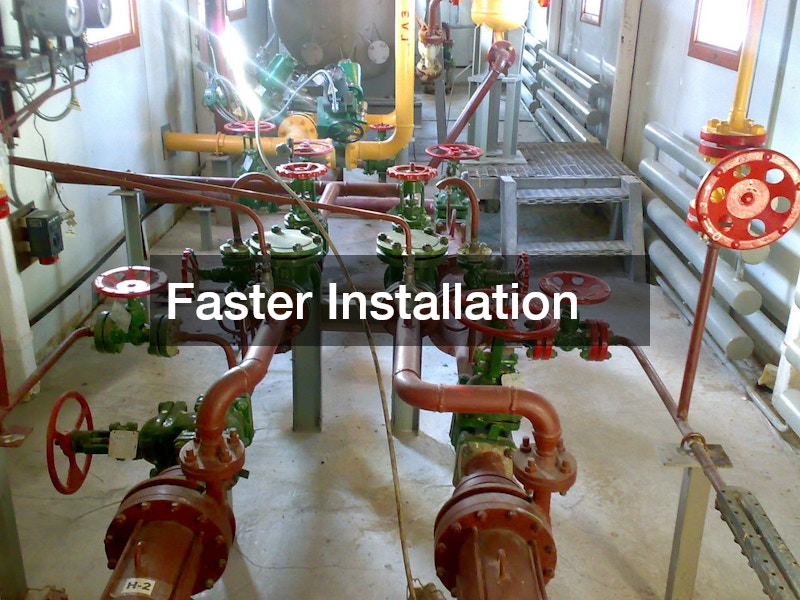Benefits of Using Pipe Fusion in Pipeline Projects

Pipeline construction is a critical aspect of many industries, from water and gas distribution to industrial chemical transport. Choosing the right method to join pipes is essential for ensuring long-term performance, safety, and cost-effectiveness. One technique that has gained significant attention in recent years is pipe fusion. This method offers several advantages over traditional joining techniques, making it an increasingly popular choice for modern pipeline projects.
What Is Pipe Fusion?
This process is used to join thermoplastic pipes, such as polyethylene (PE) and polypropylene (PP), by heating the ends of the pipes and then pressing them together to form a strong, continuous bond. Unlike mechanical connections or fittings, it creates a joint that is essentially the same as the pipe itself, providing seamless integrity. There are various fusion methods, including butt fusion, socket fusion, and electrofusion, each suitable for different applications and pipe sizes.
Enhanced Strength and Reliability
One of the primary benefits of this method in pipeline projects is the superior strength and reliability it provides. Traditional methods, such as mechanical couplings or threaded fittings, often create weak points where leaks or failures can occur over time. This process, by contrast, produces a homogenous joint that is as strong as—or even stronger than—the pipe itself.
The reliability of fused pipes is particularly important in industries that transport critical resources, such as potable water or natural gas. A single joint failure in these systems can have far-reaching consequences, from service disruptions to safety hazards. Pipe fusion mitigates these risks by ensuring that the pipeline operates as a single, continuous unit.
Long-Term Cost Savings
Although the initial cost of equipment and training for this method may be higher than conventional joining techniques, the long-term financial benefits are substantial. Since fused joints are highly durable and resistant to leaks, maintenance and repair costs are greatly reduced over the lifetime of the pipeline. Additionally, the reduced likelihood of joint failures minimizes downtime and operational disruptions, which can be extremely costly in large-scale projects.
For municipal water utilities or industrial facilities, these savings can be particularly significant. Over time, the cost-effectiveness of this approach often outweighs the upfront investment, making it a financially prudent choice for both small and large-scale pipeline projects.
Improved Safety
Safety is another compelling advantage of this method. Since the technique eliminates the need for chemical adhesives or mechanical fittings that could fail under pressure, the risk of accidents and hazardous leaks is minimized. This is especially important in gas or chemical pipelines, where a single joint failure could lead to explosions, fires, or environmental contamination.
Moreover, fusion processes are generally cleaner and require fewer hazardous materials, reducing the risk to workers during installation. By creating a joint that is inherently strong and secure, it contributes to a safer working environment on construction sites and throughout the operational life of the pipeline.
Versatility in Applications
Pipe fusion is suitable for a wide range of applications, from small-scale residential systems to large industrial pipelines. Its versatility is enhanced by the variety of fusion methods available. Butt fusion, for example, is ideal for joining larger-diameter pipes in high-pressure systems, while electrofusion is often used in tight spaces or for complex pipeline geometries.
This adaptability allows engineers and contractors to select the most appropriate fusion technique based on project requirements, pipe size, and environmental conditions. The ability to customize the joining method increases efficiency and ensures the best possible performance for each unique project.
Environmental Benefits
In addition to its operational advantages, pipe fusion is environmentally friendly. Unlike mechanical joints, which may require replacement or produce waste during maintenance, fused joints have a long lifespan and generate minimal material waste. The seamless nature of fused pipes also reduces the risk of leaks, preventing the accidental release of water, chemicals, or gas into the surrounding environment.
Faster Installation
Time efficiency is another key advantage of this method. Once operators are trained and equipment is in place, the fusion process can be completed relatively quickly compared to the meticulous assembly required for mechanical fittings. This faster installation reduces labor costs and allows projects to progress on schedule, which is particularly valuable for large-scale pipeline construction or urgent infrastructure upgrades.
The benefits of this method in pipeline projects are clear. From unmatched joint strength and reliability to long-term cost savings, enhanced safety, versatility, and environmental advantages, it stands out as a superior approach for joining thermoplastic pipes. Its growing adoption across industries highlights its effectiveness and underscores the importance of selecting the right joining method for modern pipeline systems. By investing in the appropriate technology and training, companies can ensure the longevity, safety, and efficiency of their pipelines while achieving substantial financial and operational gains.







